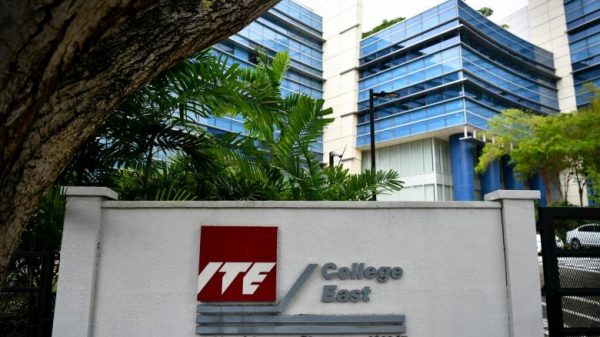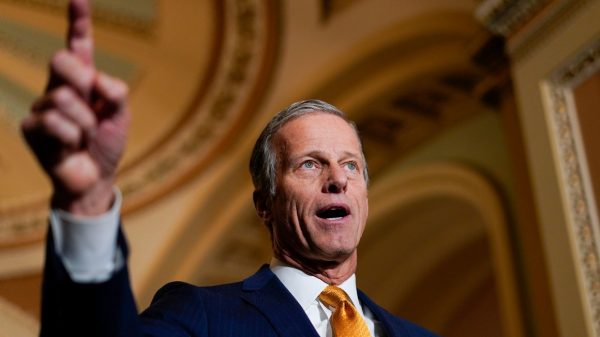A key measure of investors’ inflation expectations has climbed in recent weeks, adding fuel to concerns about rising consumer prices.
As of Thursday, the gauge known as the 10-year break-even rate suggested that the consumer-price index will rise by an annual average of 2.64% over the next decade, according to Federal Reserve Economic Data, or FRED. That is up from a recent low of 2.28% in late September and the highest level since 2012.
The break-even rate is found by looking at the difference in yields between nominal Treasury bonds and Treasury inflation-protected securities, or TIPS. The rate is so called because TIPS holders can earn the same return as holders of nominal Treasurys if average annual CPI inflation matches that gap over the life of the bonds.
Rising break-even rates worry some investors because the move suggests current inflation pressures could last longer than previously expected. The Labor Department said on Oct. 13 that last month’s consumer-price index rose by 5.4% from a year earlier, in unadjusted terms. While that index tends to run slightly higher than the Federal Reserve’s preferred inflation gauge, the data still confirmed that inflation is much higher than the central bank’s 2% annual target.
Investors and analysts generally expect inflation to cool in the coming months as businesses ramp up the supply of goods to meet consumer demand and consumers further ease supply-chain pressures by returning to more normal spending patterns—purchasing fewer goods and more services. Many, though, have revised their forecasts upward in light of surging energy prices, rising rents and increasing evidence of a tightening employment market.
Some analysts caution that break-even rates still don’t suggest serious concern about longer-term inflation, though they may be heading in that direction. Yield differentials between nominal and inflation-protected securities, for example, suggest CPI inflation will spend the next five years hovering mostly around 2.8% but then gradually fall to roughly 2% about a decade from now. And even those numbers could overstate baseline expectations because break-evens can also rise based on increasing uncertainty about the inflation outlook.
“Break-evens are flashing maybe a yellow light here, but certainly not a red light,” said Michael Pond, head of global inflation-linked research at
Barclays PLC.
Several factors have lifted break-even rates this year, including a vaccine-fueled economic recovery, massive amounts of government stimulus and consistent messaging from central bankers that the Fed will be patient in its approach to tightening monetary policy.
Last year, Fed officials announced a new policy framework, stating they would welcome inflation being modestly above their 2% target for a time to make up for the extended period it has spent below that level.
Investors’ concerns over inflation have ebbed and flowed this year, but have clearly increased lately, driving a flood of cash toward inflation-protected bonds. About $2.1 billion on net was funneled into mutual and exchange-traded funds that focus on TIPS during the two weeks ending Oct. 13, according to Refinitiv Lipper data, the largest two-week inflow in more than two months. That compared with a net outflow of $1.7 billion from all taxable bond funds during the same period.
Fed officials themselves have recently expressed concerns that disrupted supply chains were raising the risks of more persistent inflation. At the same time, Chairman
Jerome Powell
has said the central bank doesn’t expect the current spike in consumer prices to lead to a new regime in which inflation remains high year after year.
Break-even rates, notably, have climbed even as investors have pulled forward their forecasts for when the Fed will start to raise interest rates. Federal-funds futures, which investors use to wager on interest rate policy, recently showed a 51% chance of a rate increase by July 2022 and 75% by September 2022. That is up from around 15% and 27% a month ago, respectively.
“The question right now is at what point does the pull forward [in rate increases] and possible tightening make investors believe that central banks can slow the growth of inflation,” said
Jim Vogel,
interest-rates strategist at FHN Financial.
SHARE YOUR THOUGHTS
How concerned are you about inflation? Join the conversation below.
Raising interest rates typically slows economic growth by increasing borrowing costs and pushing consumers to spend less, thereby cooling inflation as well.
Shorter-dated inflation expectations can continue to rise with commodity price concerns, but it has been surprising that the market’s pulling forward of interest-rate hikes hasn’t done more to arrest the rise in investors’ inflation expectations, some analysts say.
Still, rising interest-rate expectations and inflation forecasts aren’t incompatible, Barclays’ Mr. Pond said. Even if the Fed starts raising interest rates next year, it could still be years before rates reach the so-called neutral level that officials believe would neither stimulate nor slow the economy.
“The Fed is saying we’re going to continue to run a stimulative policy even as we see inflation above our target over the next three years,” he said.
Write to Sebastian Pellejero at sebastian.pellejero@wsj.com and Sam Goldfarb at sam.goldfarb@wsj.com
Copyright ©2021 Dow Jones & Company, Inc. All Rights Reserved. 87990cbe856818d5eddac44c7b1cdeb8













































